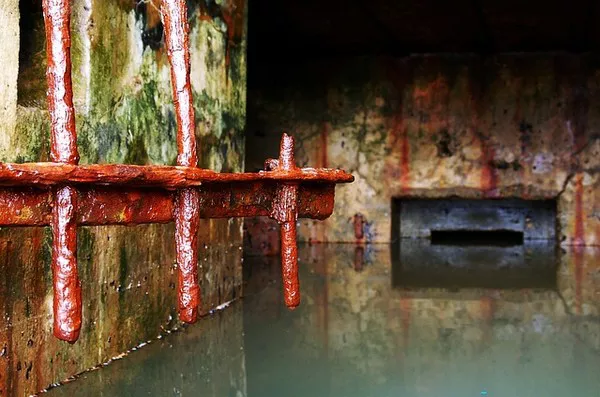Wastewater treatment is a vital process that ensures the protection of public health and the environment by removing pollutants from water before it is discharged back into natural water bodies. Among the many challenges faced by wastewater treatment plants, managing grit is a crucial aspect that demands attention. Grit, composed of sand, gravel, silt, and other heavy materials, poses significant operational challenges and can impact the efficiency of treatment processes if not managed effectively. In this article, we will delve into what grit is in wastewater treatment, its sources, impacts, challenges, and strategies for effective management.
What is Grit in Wastewater?
Grit in wastewater refers to inorganic solid materials such as sand, gravel, clay, and other heavy particles that enter the wastewater stream. These particles are typically abrasive and can cause damage to equipment and infrastructure within the treatment plant if not removed efficiently. Grit can originate from various sources, including:
Soil Erosion: Natural processes such as erosion of soil and sedimentation contribute to the presence of grit in wastewater, especially during heavy rainfall events.
Urban Runoff: Urban areas with impervious surfaces such as roads and pavements can lead to the accumulation of grit due to runoff carrying debris and sediment into the sewer system.
Industrial Discharges: Certain industries produce wastewater containing grit-like materials as by-products of their manufacturing processes, further adding to the grit load in treatment plants.
Construction Activities: Construction sites are sources of grit, with soil disturbance and excavation activities releasing sediment into the wastewater system.
Impacts of Grit in Wastewater Treatment
The presence of grit in wastewater can have several detrimental effects on the treatment process and infrastructure:
Abrasion and Wear: Grit particles are abrasive and can cause wear and tear on pumps, pipes, valves, and other equipment within the treatment plant. This can lead to increased maintenance costs and reduced equipment lifespan.
Reduced Efficiency: Grit accumulation in tanks and channels can impede the flow of wastewater and interfere with treatment processes such as sedimentation, aeration, and filtration, leading to reduced treatment efficiency.
Increased Energy Consumption: The presence of grit necessitates higher energy consumption to overcome the resistance caused by abrasive particles, leading to increased operational costs for the treatment plant.
Risk to Public Health: Grit can harbor harmful pathogens and pollutants, posing a risk to public health if not effectively removed during the treatment process.
Challenges in Grit Management
Managing grit in wastewater treatment poses several challenges for plant operators:
Variability in Grit Characteristics: Grit particles can vary widely in size, density, and composition, making it challenging to design and implement effective grit removal systems that can capture all types of grit efficiently.
Limited Space and Resources: Many existing wastewater treatment plants have limited space and resources to install and maintain grit removal systems, necessitating innovative approaches to grit management within constrained environments.
Operational Complexity: Grit removal systems require careful monitoring and maintenance to ensure optimal performance. However, operational complexities such as fluctuating flow rates and varying grit loads can make it challenging to achieve consistent grit removal efficiency.
Environmental Concerns: Disposal of grit removed from wastewater can pose environmental challenges, particularly if it contains contaminants or pollutants that require proper handling and disposal to prevent harm to the environment.
See Also Physical Treatment of Wastewater
Strategies for Effective Grit Management
Despite the challenges, several strategies can help wastewater treatment plants effectively manage grit:
Grit Removal Systems: Implementing efficient grit removal systems such as grit chambers, vortex separators, and hydrocyclones can help capture grit before it reaches downstream treatment processes, minimizing equipment damage and operational disruptions.
Regular Maintenance: Regular inspection and maintenance of grit removal systems are essential to ensure they operate effectively. This includes removing accumulated grit, repairing damaged equipment, and adjusting system parameters as needed to optimize performance.
Optimization of Treatment Processes: Modifying treatment processes to account for the presence of grit can help mitigate its impact on plant operations. For example, adjusting sedimentation basins’ design to minimize grit deposition or installing protective coatings on equipment to reduce abrasion.
Grit Recycling and Disposal: Consideration should be given to recycling grit for beneficial reuse where feasible, such as in construction materials or landscaping projects. Proper disposal procedures should be followed for grit that cannot be recycled to minimize environmental impact.
Public Education and Outreach: Educating the public about the importance of proper waste disposal practices and the impacts of grit on wastewater treatment can help reduce the influx of grit into the sewer system, ultimately easing the burden on treatment plants.
Conclusion
Grit management is a critical aspect of wastewater treatment that requires careful consideration and proactive measures to mitigate its impact on plant operations and the environment. By understanding the sources, impacts, challenges, and management strategies associated with grit in wastewater, treatment plant operators can implement effective solutions to ensure the continued efficiency and reliability of their operations. Collaborative efforts between stakeholders, including government agencies, industry partners, and the public, are essential to address grit-related challenges and achieve sustainable wastewater management practices.


